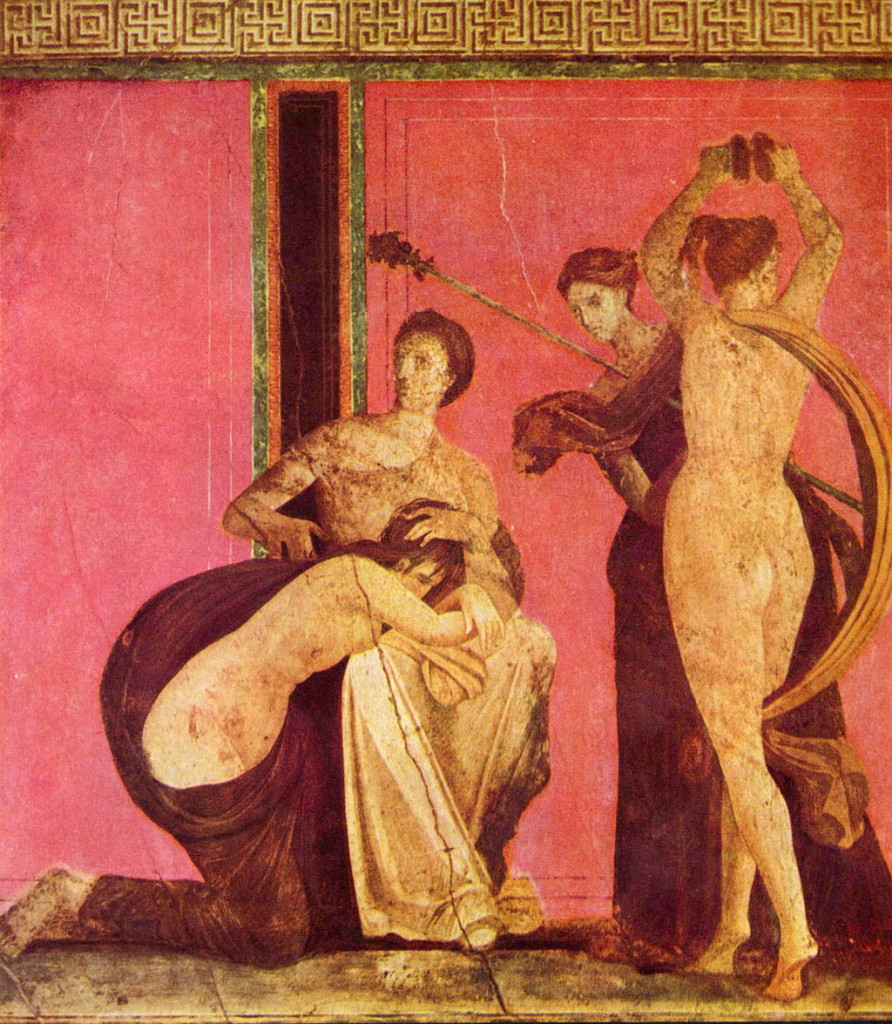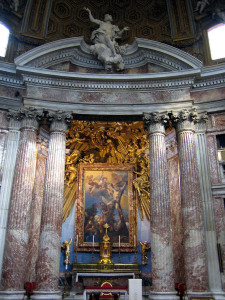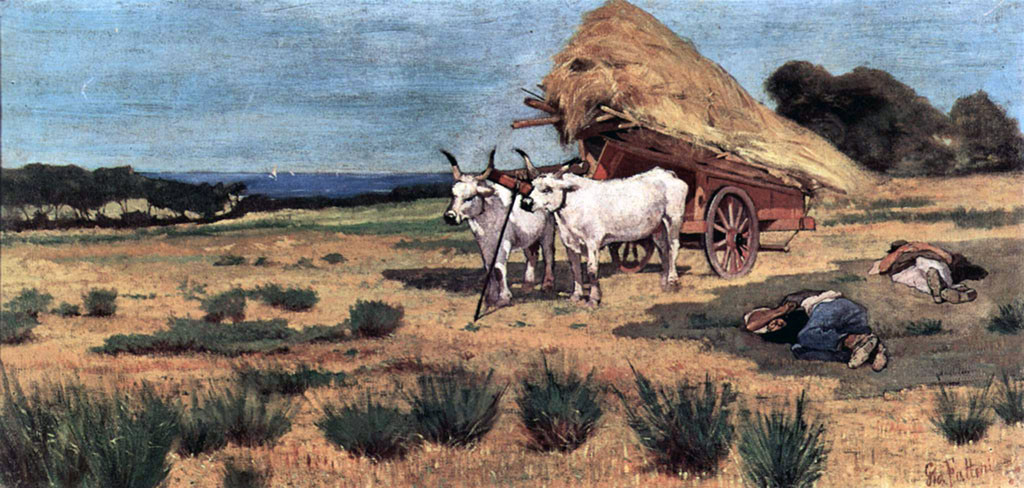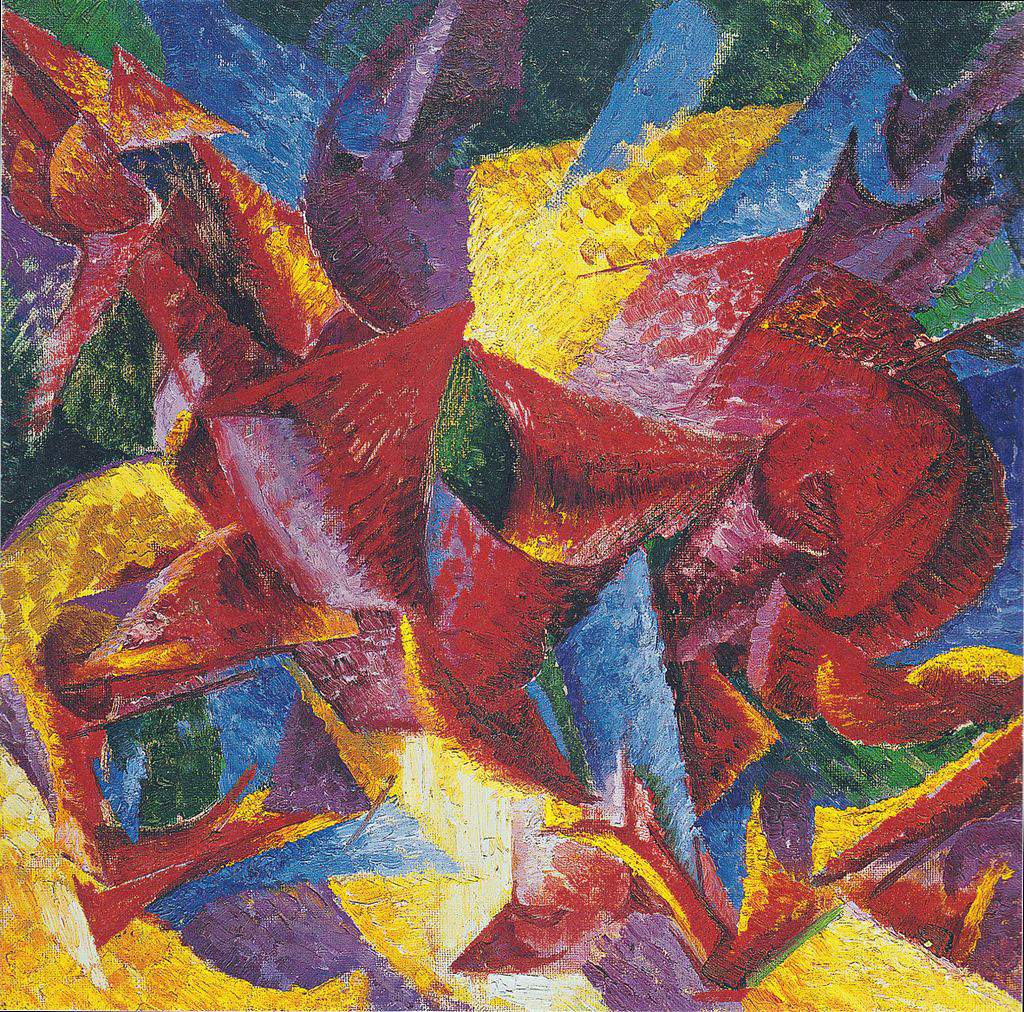Roman Art
Italian art movements in Italy start with architectural design of Roman temples and residences, structured on Etruscan models and principles. Because Etruscan style and design modes showed strong Greek influence, buildings in Italy retained many of these elements when Greek design was adopted by Rome. By the final days of the Roman Republic, Greek architectural theory and practice were prominent in Roman style. As the Roman Empire grew and expanded, this dominant style of the time spread widely, particularly for use in public buildings. Roman architecture joined with local design elements in many towns and villages, often within the same structure.

As the world’s largest, most progressive city in the first century A.D., Rome was home to many large, ornate houses which were small museums in their own right, richly decorated with lush paintings and Italian crafts depicting Roman mythology and history along with contemporary life. Floors were of brilliantly colored mosaics, and ornate columns and ceiling art brought the glory of natural beauty indoors to be admired. The Roman period of painting in Italy is widely renowned for three primary contributions—portraits, historical depictions and landscapes. Since art and politics had a strong connection in Rome, secular motifs and principles were valued, which was not true of Greek art. Interior columns and frescoes were given more attention than imposing exterior facades and grand, ornate entrance ways. During the late Roman Empire, the Romans embraced Eastern style from Constantinople, resulting in the Byzantine style of art.
Renaissance
Gothic art in Italy transitioned into the Renaissance, perhaps the most famous of all the Italian art movements. While the Gothic period was strongly influenced by Dominican and Franciscan monks led by Saint Dominic and Saint Francis of Assisi, the Renaissance brought contemporary reality of the time to life in vibrant, true-to-life painting and sculpture. Renaissance artists, writers, musicians and architects used bodily proportions relative to those of a living, breathing human being. All ornamentation was fashioned after designs from antiquity. During this extremely innovative, powerful and influential era of art, from the 14th through the 17th centuries, art and intellect aligned to produce a tremendous volume of highest caliber philosophy, art forms and reasoning, all focused on the physical, mental and metaphysical realizations of humankind.

This era in history, philosophy and the arts was deemed the Age of Enlightenment. In the early days of the 14th century, Florentine painter Giotto led the way in displaying natural realism in his frescoes of unparalleled beauty as the first artist to produce work in this style following the Roman Empire’s downfall. Frescoes by Giotto graced the walls of major churches in Assisi, Padua, Florence and Rome. Master artists and architects were abundant in Florence during the 15th century. Works of major significance included sculpture by Donatello, works of the Italian painter Masaccio and the architecture of Brunelleschi.
Throughout the golden years of the Renaissance and art of Italy, the 15th and early 16th centuries, the world witnessed the magnificent creations of three Italian artists and geniuses of the very ultimate talents and artistic vision ever realized—Michelangelo, Raphael and Leonardo da Vinci. Michelangelo’s works included masterful paintings, poetry and architectural design as well as exquisite frescoes such as the world acclaimed and admired ceiling of the Sistine Chapel of the Vatican. Raphael revealed a genius for use of delicate hues, perspective and poetic painting as displayed in his famed fresco, ‘The School of Athens.’ Leonardo da Vinci’s large painting of ‘The Last Supper’ and his portrait of ‘Mona Lisa’, two of his most brilliant works, helped make him a celebrated symbol of the powerfully and gracefully combined art and intellect of this amazingly rich period in history, culture and art.
Baroque and Rococo

Among the Italian art movements, the Mannerism, emphasizing a grand, fashionable courtly mode of style, was strong in Florence by leading artists of this style such as Giorgio Vasari and Benvenuto Cellini, and this artistic period led into the dramatically ornate and stylistically lush Baroque and Rococo Periods. Near the first of the 17th century, Rome once again was a dynamic center of art with the beginning of the Italian Baroque Period. Renowned masterpieces of this era were the dynamic chiaroscuro paintings of Caravaggio. Maestro of grandiose exuberance in both architecture and sculpture was Italian sculptor Bernini. One of the major artists of the Rococo style was the Italian painter from Venice, Giovanni Battista Tiepolo.
Italian Neoclassical and 19th Century Art
Italian Classicism and Neoclassicism in the arts and architecture focused on proportion, symmetry and geometry, combining elements of both Ancient Greek and Ancient Roman art along with comprehensive creative enlightenment of the Renaissance. The structural designs of Brunelleschi and the works of Italian sculptor Antonio Canova gained prominence during this period.
Macchiaioli Period: Italian Impressionism

Italy developed its own brand of Impressionists including Giovanni Fattori and Giuseppe Abbati. These artists started what later became the Impressionist movement of art in France. Their main artistic premise was that areas or spots of shadow and light (macchie) were primary art components.
Modern and Contemporary Italian Art
In the early days of the 20th century, futurism and its creative followers shaped a profound world vision. Famed artists of the Futurism era were Giorgio de Chirico and Amedeo Modigliani. Futurist poet and editor Marinetti actually gave this era its name, and artists of this period broke realistic forms into overlapping color and image fragments. Giorgio de Chirico also founded the Metaphysical Painting movement in Italy, displaying the poetic qualities of movement. Another important artistic movement that developed as Modern art evolved was Novecento Italiano in Milan, honoring the grand representational arts of Italy’s past.

Spatialism (movimento spaziale) in the art of Italy was stated by artist Lucio Fontana, and its basic criteria was used in manifestos from 1947 to 1954. Pierced or slashed paintings that incorporated elements from data, tachism and concrete art styles and included updated technology as well as references to kinetics and time. Arte Povera (impoverished art) in the 1960s in Italy borrowed and empowered components of minimalist, conceptual and performance art with use of common materials. Many subsequent artistic and Italian crafts movements and sub-movements and methods of working have been developed and are currently in progress in Italy and globally, all with new outlooks and interpretations of older art styles and eras. It is enlightening for Italian artists and others worldwide today that there are myriad powerful and valid art forms and movements to follow and emulate that started in Italy throughout the illustrious history of art and many novel innovations and ingenious ideas yet to arrive on this brilliant, ever-creative and transformational scene.

